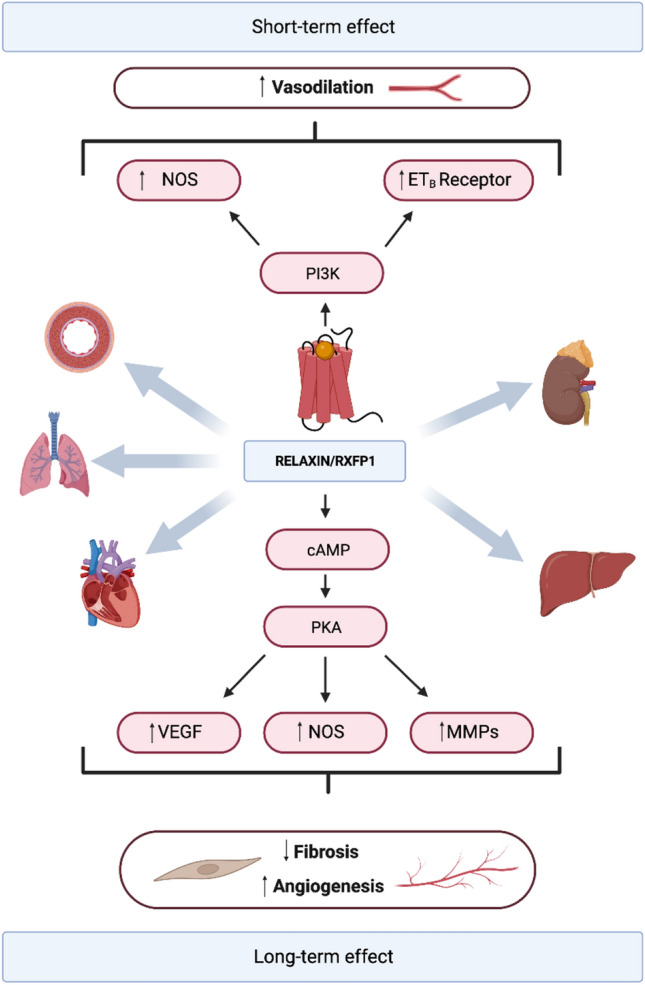Fig. 1.

Relaxin’s actions are mediated by the RXFP1 receptor. Short-term exposure to relaxin primarily induces vasodilation by phosphorylating NOS (nitric oxide synthase) and enhancing the expression of the endothelial-B receptor (ET-B receptor). With sustained exposure, relaxin promotes an upregulation in gene expression of crucial factors such as vascular endothelial growth factor (VEGF), inducible NOS (iNOS), and matrix metalloproteinases (MMPs). This response culminates in a potent anti-fibrotic effect and in the promotion of angiogenesis. The cardioprotective impact of relaxin is reached through two main mechanisms: hemodynamic improvement and end-organ protection. These positive effects extend to the liver, kidneys, heart, lungs, and vasculature. Created with BioRender.com
